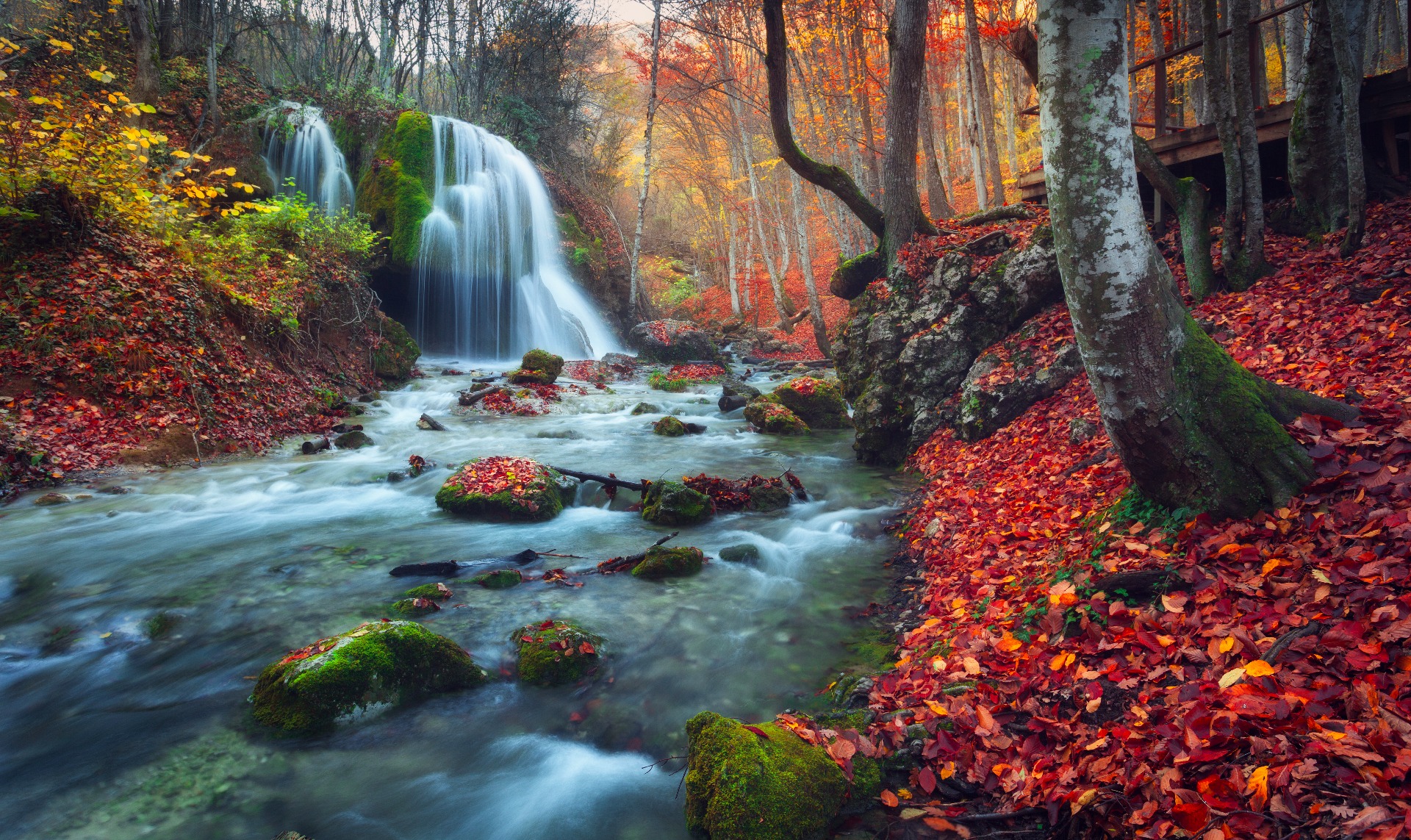
76-85 Returning to Kṛṣṇa’s Goṣṭha-yatra
76 Thereafter, Kṛṣṇa uses flowers to decorate his sakhās and speaks pleasing words to increase their ananda. Then they enter the forest just outside Nandagrāma.
Ṭīkā: Kusuma-bhūṣaṇa are flower ornaments. Kṛṣṇa decorates the sakhās with flower-crowns, flower-bracelets, flower-armlets and flower mālās. And just before returning, he expresses appreciation: "O brothers! The pleasure that I experience while cowherding and playing in the forest with all of you is indescribable!
My mother and father can't taste a drop of it! Rather they consider: "Oh! Our boys (Rāma-Kṛṣṇa) have such a hard time managing the cows, they must wander in the hit sun all day; surely, they face many troubles!'…. But aha! Our cow-herding ananda isn't even found in Vaikuntha—so what can compare with it?"
77 In the last kuñja kanana is a sarovara. Here Kṛṣṇa blows his muralī, bringing the dhenus to a halt. Then while inducing them to drink the water, Kṛṣṇa divides them into herds and counts their numbers on a colorful jeweled necklace.
Ṭīkā: Kṛṣṇa has a large variety of dhenus, and he rounds them up in herds according to their color. So, to keep track, Kṛṣṇa wears a Maṇi-mālā around his neck having colored jewels that match each herd. Thus, he sits down to count them.
78-80 After counting, and not finding a cow missing, Kṛṣṇa become happy. But sometimes cows run astray; then Kṛṣṇa calls the missing ones by name on his flute, and they quickly come running to rejoin their herd. Now Kṛṣṇa begins the last leg of his homeward journey.As Kṛṣṇa enters the village that is covered with go-dhūli (the dust from the cows' hooves), his curly locks are scattered with peacock feathers, his chest is adorned with a bright gunja mālā and a flower garland tosses with his gait. Thus, Kṛṣṇa blows his muralī flute while a cowherding stick is tucked under his arm and candana ropes (for binding the cows) rest over his shoulders. A buffalo horn hangs from Kṛṣṇa's saṣ, bunches of newly-blossomed leaves decorate his hair and his long eyelids enhance his playfully roaming eyes, that are red around the borders. As Govinda thus returns, feeling tired from his vana-yatra, his bright bodliy luster showers amṛta on the Vājavāsīs' cakora eyes!
Ṭīkā: As Kṛṣṇa is fatigued, beads of perspiration, that resemble a row of pearls, form on his body. These nectar-droplets mix with his effulgent anga kānti and sprinkle the cakora eyes of everyone viewing him!
81 As a cloud's rain-shower extinguishes a forest fire, rasamaya nava jaladhara kānti Śyāmasundara extinguishes the Vrāja sundaris' blazing virahāgni (fire of sepparation) by showering his madhura flute song!
Ṭīkā: Śrīla Kavi Karṇapūra's Alaṅkāra-Kaustubha adds: "Nanda and Yaśodā first see the dhenu reṇu from a great distance, then the dhenus' loud mooing is heard, and then the dhenus come into view. Next Kṛṣṇa's muralī-dhvani is heard, then a bright Śyāma kānti is perceived—and finally, from behind the effulgence—Govinda appears!"
As the day comes to a close, the Vrājavāsīs begin discussing how to celebrate Kṛṣṇa's arrival festival. And as they see the dhenu reṇu, their fever of their talk increases. Yet as they hear the mooing dhenus their excitement overflows, as they confirm—" Yes, he is really coming!" Thus, Kṛṣṇa steals the Vrāja taruṇīs' mano-ratna (the wheel of the minds of the young girls of Vrāja) with his sweet flute playing!
Nava nīrada sundara Govardhana-dhārī's caraṇa kamālā (the lotus like feet of the beautiful fresh like cloud, the carrier of Govardhana) touch the earth's surface in spurting steps that cause his crown to jiggle and flick away the bees that swarm around his shining mukhāravinda! His long flower garland tosses this way and that as its pollen covers his body ….and his elegant Kaustubha gem is bobbing too!
82 Kṛṣṇa returns like a king as his sakhā-soldiers blow dugles and buffalo horns; and the dust stirred from the cows' hooves appears like their victory flag! Hence, the 'dacoit viraha Rāja fearfull flees Vṛndāvan's precincts, taking with him his punishing generals of thinness, sorrow, anxiety and paralysis!Ṭīkā: Thus, all the Vrājavāsī' viraha symptoms instantly disappear.
83-84 As the dark Kṛṣṇa-monsoon-cloud arrives, the Vrājavāsīs swoon like thirsty cāṭaka birds! The dhenu reṇu forms a cloud, the dhenus' mooing resounds like thunder and Govinda's flute-song spreads a rainshower of amṛta!When they first see Kṛṣṇa, Vrājapati Nanda and his brothers, along with Yaśodā and her sister-in-law, all come running with outstretched arms to embrace him!
Ṭīkā: Nanda Mahārāj's brothers and
sisters-in-law are:
1) Upananda and his wife Tuṅgī
2) Abhinanda and his wife Pībarī
3) Sananda and his wife Kuvalā
4) Nandana and his wife Atulā
All are running to greet Kṛṣṇa!
85 Rasavatī Rohiṇī leaves the cooking to her Dāsais, and scurries outside with Atulā to affectionately embrace Kṛṣṇa and Balarāma!
